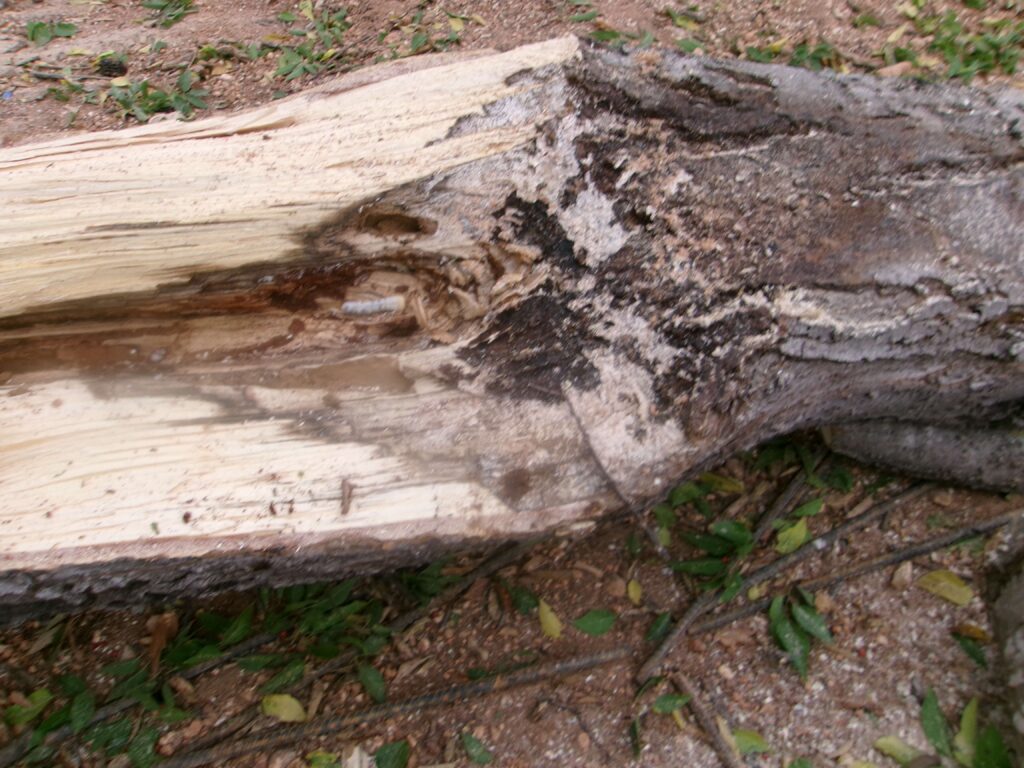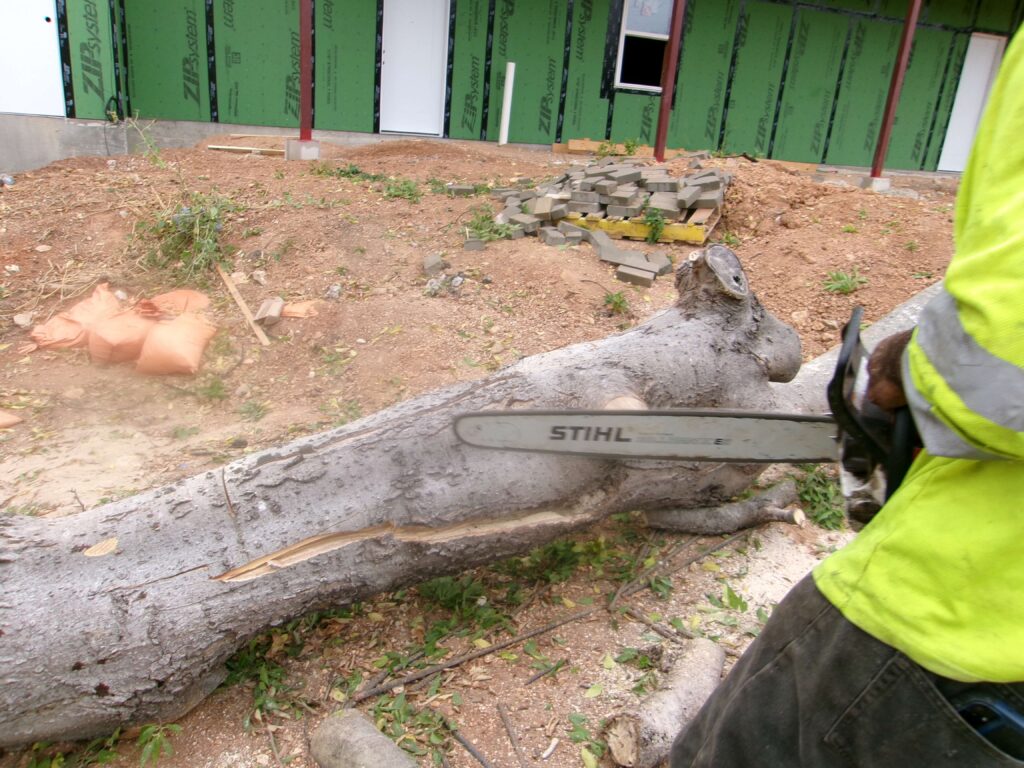Diseased tree removal is our specialty. Canopy Tree Service recently removed a rotten hackberry tree from a construction site in San Antonio. Hackberry trees are often considered a “tough” tree that can tolerate urban conditions. Unfortunately, not all tough trees survive to their expected life span. Some collapse naturally. Others in urban environments require tree removal. From a distance, the construction site tree appeared healthy. Inside, however, beetle larvae “worms” were dining on rotten wood. The cause: A forked trunk and included bark. The solution: diseased tree removal.

Why do trees develop split trunks?
This particular hackberry tree had a forked trunk. It is common to see forked trunks in cedar elms and hackberry trees in San Antonio. In crowded urban conditions where there is competition for light, the tree trunks bend to reach sunlight. Other times, the tree trunk can lose its main trunk due to increasingly common drought conditions in the region. When the trunk regrows, it typically appears forked. Forked trees often collect rainwater that leads to fungus that leads to diseased tree removal.
Included Bark Weakens Tree
Included bark is a condition associated with split trunks. It is a structural weakness in trees. We could see with this tree that as the tree grew taller and thicker, the points where the two trunks touched crept up the tree. The bark of two stems or branches grew together, becoming embedded within the union. When bark is included in the branch union, it weakens the connection because bark is not a strong material. During storms or high winds the branch is especially prone to splitting or sudden collapse.
This arrangement made the main structural support wood at the top of the fork to begin to decay. Once the tree develop decay, fungus moved in. Then beetle larvae arrived. During the immature stage of beetles, the larva resembles worms, except it has tiny legs and you can tell if you look closely they have a defined head. Eventually the fungus will travel into the roots and the tree will fall over.
Beetle larvae arrival is a natural part of nature recycling diseased or dying trees. In an urban environment where sudden tree failure could be hazardous, diseased tree removal is usually the solution.

Avoiding Diseased Tree Removal
Hackberry trees do provide much needed shade and their fruit appeals to Robins. Not everybody loves their warty texture, but home owners who wish to preserve their hackberry or elm trees may wish to consider the following:
Proper Pruning: Early pruning to select a single, dominant leader and remove competing branches can help prevent forked trunks and included bark.
Structural Support: In some cases, arborists can install cables or braces to help support weak branch unions and reduce the risk of splitting.
Roofing tar or sealant: Can prevent water penetration. One caution for do-it-yourselfers: The safest choice if the tree could fall on a house, car, or person, is tree removal. If it is in a safe location to leave standing, then trying to pro-long the life of the tree by reducing water penetration can be useful.